‘MESH’ it up
 Recently, I started investing some time learning about implementing MESH network from HAM standpoint. I have always been intrigued by the idea of self-discovering, self-healing, self-propagating and self-provisioning networks. This makes all the more attractive in the world of HAM Radio world and technology.
Recently, I started investing some time learning about implementing MESH network from HAM standpoint. I have always been intrigued by the idea of self-discovering, self-healing, self-propagating and self-provisioning networks. This makes all the more attractive in the world of HAM Radio world and technology.
in my research, I bumped into “Broadband-Hamnet” (BBHN), previously known as “HSMM-MESH” (High Speed Multi Media Mesh). BBHN is a Mesh network software platform specifically geared toward the HAM radio community. You can read all about BBHN at the landing page. Very impressive, efficient and simple to manage Mesh network platform. Additionally, you will find these ( 1 & 2 ) YouTube videos by N7RXE (Kevin Reeve) very informative.
In this page, I shall attempt to journal my implementation of the BBHN platform in my own HAM operations;
A few things first:
- The BBHN software platform is currently available for a very specific list of wireless network routers. Currently, the list includes specific models of the Linksys WRT54G wireless routers and a few specific Ubiquity hardware. When you’re out and about shopping for used Linksys gear, you might want to have this “Hardware Guide” document handy. Pay extra close attention to the “Serial #”. You should be able to buy these old used network router gear on ebay for a decent price. A few sellers are willing to sell them in lots and some w/ free shipping.
- While you’re waiting for your purchased hardware to arrive, you might as well save some time and get the following taken care of:
- Download the correct firmware images – you will eventually upload this image network router hardware when they arrive. Go to this page to download
- Once you have your hardware purchased and in your hands, read thru this “How To – Firmware Installation Guide” guide ( AD5OO, David Rivenburg) from the BBHN page. This guide does a fantastic job at simply detailing the flow of steps in getting the BBHN mesh network software image on to your router.
- You will also find this landing page of “User Documentation” very useful – key authors include K5KTF – Jim Kinter, AD5OO and NG5V – Rick Kirchhof
About my implementation of BBHN Mesh:
- In my initial BBHN implementation project, I am putting up 3 to 4 Linksys WRT54GS (ver 1 thru 4) routers (‘Mesh Nodes’) in my property. One needs to be in the house attached to my spare laptop while other 3 will live outside in the yard living on trees. Let’s call the one in my house, “Base Node – BN”; The ones in the backyard, “Propagation Node – PN” for simplicity purposes.
- The BN is required for me to connect to other PNs, consume the services provisioned by them and administer+manage them. The PC connected to my BN will be running services such as PACLink, WinLink SysOp, and other internet-free-radio sysop services that can be surfaced and provisioned thru the BN. This part I am still WIP
- The PN will be strategically placed along the backyard to experiment propagation coverage, be able to expand the coverage area to traverse thru from node-to-node and explore services exposed by various BNs and PNs. Note that for example, I could have neighbors who like me might have their own BN set up and PNs setup. And, his BN+PNs will be forming a larger mesh w/ my BN+PNs. All thru automatically enabled self-discovery, self-propagation, self-healing, and other mesh network behaviors
- The BN setup is a simple setup; plug the PC network port to one of the LAN ports on the router.
- Yes, you CANNOT connect to these nodes wirelessly. One has to have a wired connection to at least one node (that is BN) to be able to talk to other nodes on the mesh network
- once connected, your PC should start seeing your BN as, “MeshNode” in your connected network names list. You then should be able to fire up your browser and navigate to the BN’s webpage (can be located at “http://localnode:8080/” paradigm) to manage the BN setup and also be able to navigate to other PNs in the mesh network w/ easy to follow steps.
- The PN set up is a bit involved because these nodes are going to be living outside in the wild w/o any readily available electric power source, and are prone to weather related factors.
- Hence enter the “Self-Sustaining Propagation Mesh Node“- (I really love that term, like saying it over and over again), “Self-Sustaining Propagation Mesh Node”.
- SSPMN for simplicity, is going to be deployed w/ these elements:
- will live n a weather proof (or semi proof) 50Cal Ammo can container (more details to come)
- will contain a 10Ah 12V Sealed Lead-Acid Battery
- battery will be charged and self-sustained by Solar charging equipment. A 10W Monocrystaline solar panel and charge controller w/ harness will power this set up
- The Linksys WRT54GS router will live inside the ammo can powered by the battery
- There are plans for the Ammo can to contain a Raspberry Pi connected to one of the LAN ports on the router. The Raspberry Pi will contain a 2 GB USB Stick mounted for storage and accessible via a read-only access to publicly shareable HAM Radio manuals, documents, details about BBHN mesh network, etc. If this is implemented, it is SUPER Important that the USB stick and the RaspPi are under tight security lock down for any and all “write-access”. The root user will be the only user to have access to manage the read/write operations on the devices. (More to come here)
- Ammo can will be equipped w/ a RJ-45 Ethernet port that allows fellow pass-by HAMs to simply take their laptop, connect to the PN and be on the air for whatever email, document reading, reach other nodes, etc operations w/ ease. The Port will be weather proof.
- In Summary, once completed, this PN will be able to survive on its own in the mesh network servicing the HAM community at large
Project status:
- I have the BN and 2 PN routers ready to go w/ firmware installed and setup. I am currently waiting on parts from ebay – battery, solar panel, charge controllers, etc to arrive. Once they’re here, I will be building out ONE SSPMN and deploying that to the field as a “show and tell” example. The parts should be here in the next couple of days
- I will have YouTube videos and many pictures to share. The videos and the pictures will be build out videos of the SSPMN and the overall set up.
A few pictures (more to come):
Stay Tuned.
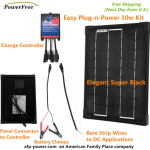
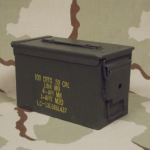
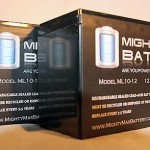
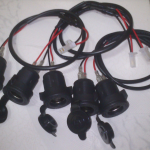
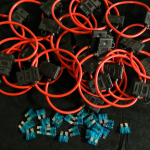

Leave a Reply